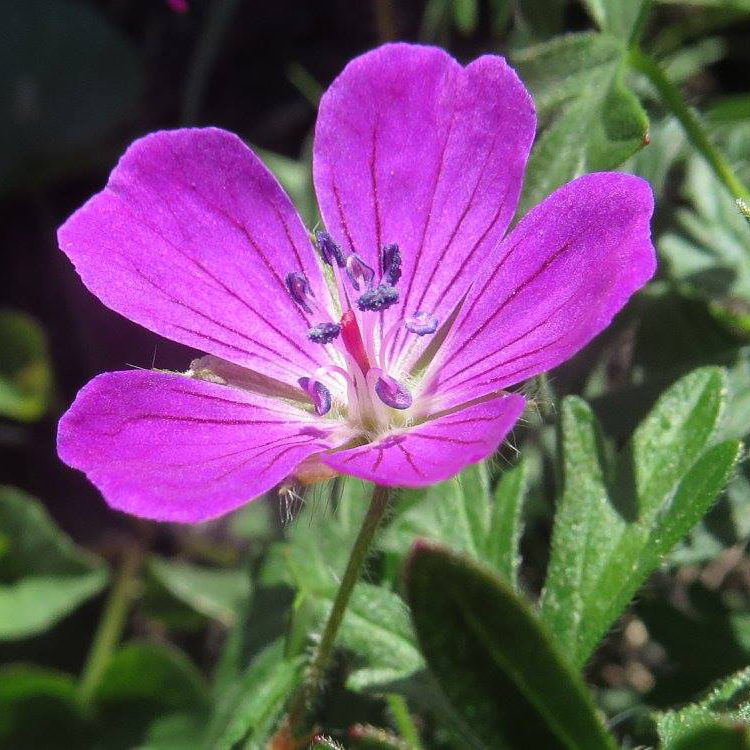
The meadows above Kynance Cove are a good place to see Bloody Crane’s-bill in the summer, following recent habitat restoration and scrub clearance.
Photo: Steve Townsend
Scientific name: Geranium sanguineum
Other common names: Bloody Geranium
What to look for:
• Family: Geraniaceae (Geranium family)
• Flowers: Individual, deep crimson, five-petalled flowers are held on long stalks.
• Leaves and stem: Leaves are deeply lobed, with white hairs held close to the leaf surface (adpressed).
• Height: Up to 10 to 40 cm tall.
• Where: Dunes, rocks, grassland, on calcium-rich or basic soils.
• When: Flowers July to August
• Habit: Upright, bushy.
The vibrant blooms of Bloody Crane’s-bill are better known as a specialty of the limestone cliffs and dunes further north in Britain, and it can be a surprise to visitors to The Lizard to find it here, and on heathland, no less. But, of course, The Lizard is special, and that’s all because of the serpentine rock that underlies a large part of the peninsula. Although serpentine is low in calcium content, it is high in magnesium, another alkaline element, so plants that simply demand a soil composition rich in bases, but don’t need it to be limestone-rich, can thrive. That includes the glorious Bloody Crane’s-bill. (Find out more about how the soils and geology of The Lizard make it so wonderfully rich botanically).

You would think its common name refers to the colour of the flowers, but this isn’t so, being rather a reference to the red colour of the leaves in the autumn. Like several other Crane’s-bill species, the reference to the beak of the crane is a nod to the long shape of the fruiting bodies (see photo to left).
Bloody Crane’s-bill is a perennial that grows from rhizomes. The leaves die back in the autumn, and next year’s buds rest just below the ground surface, ready to burst into crimson life the following summer.
Did you know…?
…Bloody Crane’s-bill is the county flower of Northumberland.
…The magenta blossoms make this plant a favourite with gardeners.
More information and references:
Mabey, R., 1997. Flora Britannica. Chatto & Windus, London.
Rose, F. and O’Reilly, C., 2006. The Wild Flower Key, 2nd edition. Frederick Warne, London.
Stace, C., 2010. New Flora of the British Isles, 3rd edition. Cambridge University Press, Cambridge.
Published: July 2016
Author: Amanda Scott
Photos: Steve Townsend
